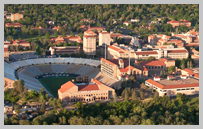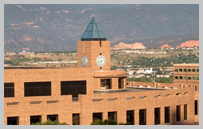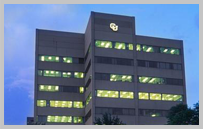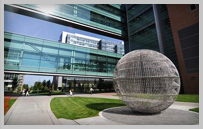Cross-campus funding know-how for cross-campus collaboration
While employees are often paid by funding from their home campus, sometimes funding from a different campus may be used. When this happens, there are different campus rules in play for posting payroll, and knowing which rules apply at which times can be confusing.
Funding is attached to a position, submitted on a CU Funding Entry form. Funding distributions are stored in a Department Budget Table (DBT). But storing SpeedTypes and distribution percentages is not all the DBT does. The DBT has other tasks as well — it stores funding rules that determine how taxes, deductions, suspense and certain earnings codes post to the general ledger. Each campus has a different set of rules, and which rules are used is determined by the business unit, or campus, of the position.
Other processes also affect how payroll posts to the general ledger such as special deduction distribution exceptions when using an override SpeedType in CU Time, distribution of certain post-doc SpeedType taxes and deductions, the assignment of account codes for different types of pay, determining encumbrances for direct and fringe costs, and posting fringe costs by FIN at month-end.
Here is a chart showing how the funding rules from the Department Budget Table rules and related payroll distribution processes are determined by campus.
| Category | Trigger | UCB | UCCS | UCD/AMC | SYS |
|---|---|---|---|---|---|
| Earnings | Position funding | Stored in the Department Budget Table for current and future funding. | |||
| Taxes & deductions | -Campus rules -Business unit position |
Pooled SpeedType determined by position data: business unit, job code, reg/temp status, and total standard hours for all positions in same status | Directly follow earnings unless Post Doc Benefit Override or a CU Time override with a UCD/AMC SpeedType (Deduction Distribution Mapping) | SpeedType override | |
| HCM encumbrances for earnings | -Encumbrance rules | Encumbrance calculates for anticipated earnings using job data after each payroll and post updates during FIN month-end close. Appointment end date, short work break, leave of absence, and end dates for budget year, funding, and projects affect encumbrances. | |||
| HCM encumbrances for taxes and deductions | -Campus rules -Business unit of position |
Anticipated taxes and deductions costs in SpeedTypes with pooled benefits | Anticipated taxes and deductions costs in SpeedTypes with earnings | Anticipated taxes and deductions costs in benefit override SpeedTypes | |
| FIN fringe rate cost allocation | -FIN month-end close for all SpeedTypes of a campus -Business unit of position does not apply |
Fringe costs post only to earnings SpeedTypes of the campus based on account code range | Fringe costs post only to earnings SpeedTypes of the campus for WC, UI, Term, Ret | None | |
| Payroll Expense Transfers (PET) | -Campus rules -Business unit position |
-Regular users reallocate earnings. Taxes and deductions follow campus rules. -Controller access required for restricted earn codes, taxes and deductions funding or account code changes. |
|||
Take a look at these examples. UCB and UCCS share similar DBT distribution rules but use different fringe rates. UCD/AMC have the same rules. Since UCB and UCCS have the same outcomes and UCD/AMC have the same outcomes, they are interchangeable in these examples.
Example 1: When a UCB employee uses both UCB and AMC funding sources:
- Earnings are distributed according to the funding distribution across both campuses’ funding SpeedTypes.
- The cost of taxes and deductions follow UCB DBT rules and all taxes and deductions post to the UCB pooled SpeedTypes. No taxes or deductions post to AMC SpeedTypes. AMC usually expects to incur a proportional cost of taxes and deductions following earnings, but in this case no taxes or deductions post, since they all posted to the UCB benefit pool.
- UCB incurs the UCB fringe rate cost only on earnings that post to UCB SpeedTypes since the fringe rate allocation is processed through FIN and the position’s business unit does not apply. No fringe costs for UCB earnings post to the AMC SpeedTypes.
- UCD/AMC incurs the UCD/AMC fringe rate costs on earnings that post to AMC SpeedTypes since the fringe rate allocation is processed through FIN and the position’s business unit does not apply. No UCD/AMC fringe costs post to the UCB SpeedTypes.
Example 2: When a UCD employee uses both UCD and UCCS funding sources:
- Earnings are distributed according to the funding distribution across both campuses’ funding SpeedTypes.
- All taxes and deductions follow UCD DBT rules and post proportionally to each of the earnings SpeedTypes on both UCD’s and UCCS’s SpeedTypes.
- UCCS incurs the UCCS fringe rate costs only on earnings that post to UCCS SpeedTypes since the fringe rate allocation is processed through FIN and the position’s business unit does not apply. This means that UCCS pays taxes and deductions on the proportion of earnings on the UCCS earnings SpeedTypes and UCCS incurs a fringe rate cost for the same earnings. No fringe costs for UCCS earnings post to the UCD SpeedTypes.
- UCD incurs the UCD fringe rate costs only on earnings that post to UCD SpeedTypes since the fringe rate allocation is processed through FIN and the position’s business unit does not apply. No UCD fringe costs post to the UCCS SpeedTypes.
- UCD/AMC incurs the UCD/AMC fringe rate costs on earnings that post to UCD SpeedTypes since the fringe rate allocation is processed through FIN and the position’s business unit does not apply. No UCD/AMC fringe costs post to the UCCS SpeedTypes.
Need extra help?
You can find more detailed instructions in the cross-campus funding guide. You can also email: hcm_community@cu.edu or System.HRGL.Team@cu.edu.






Add new comment